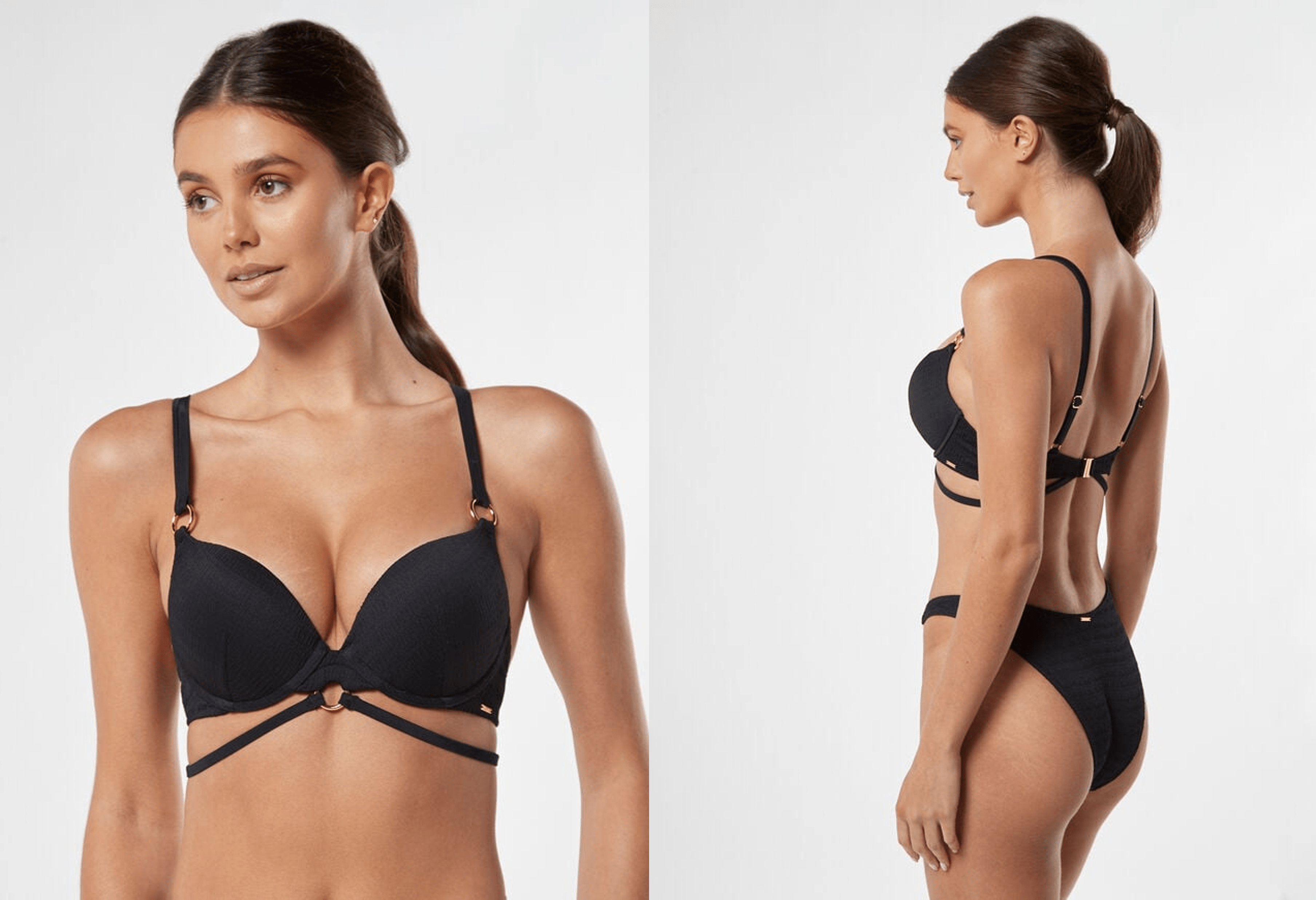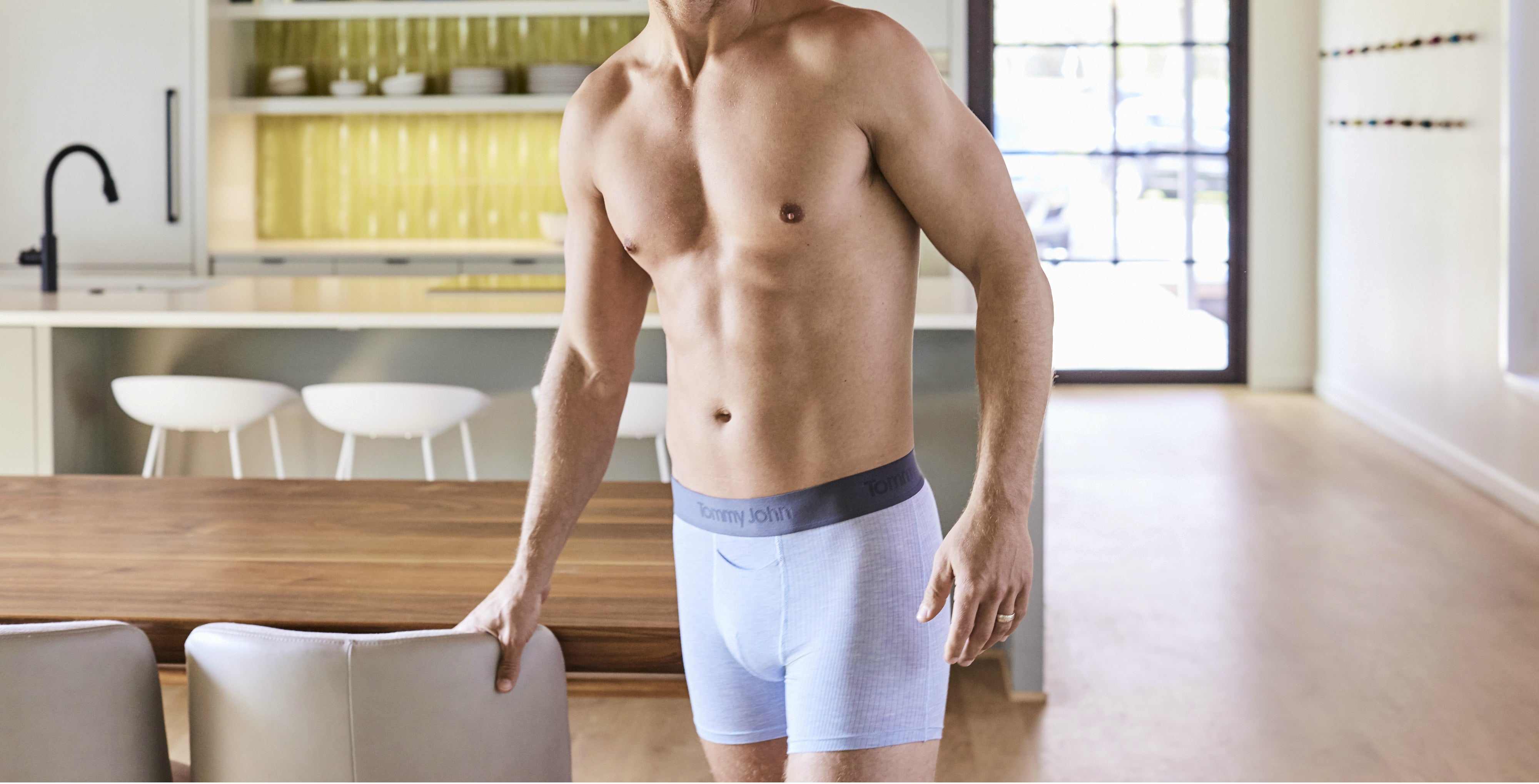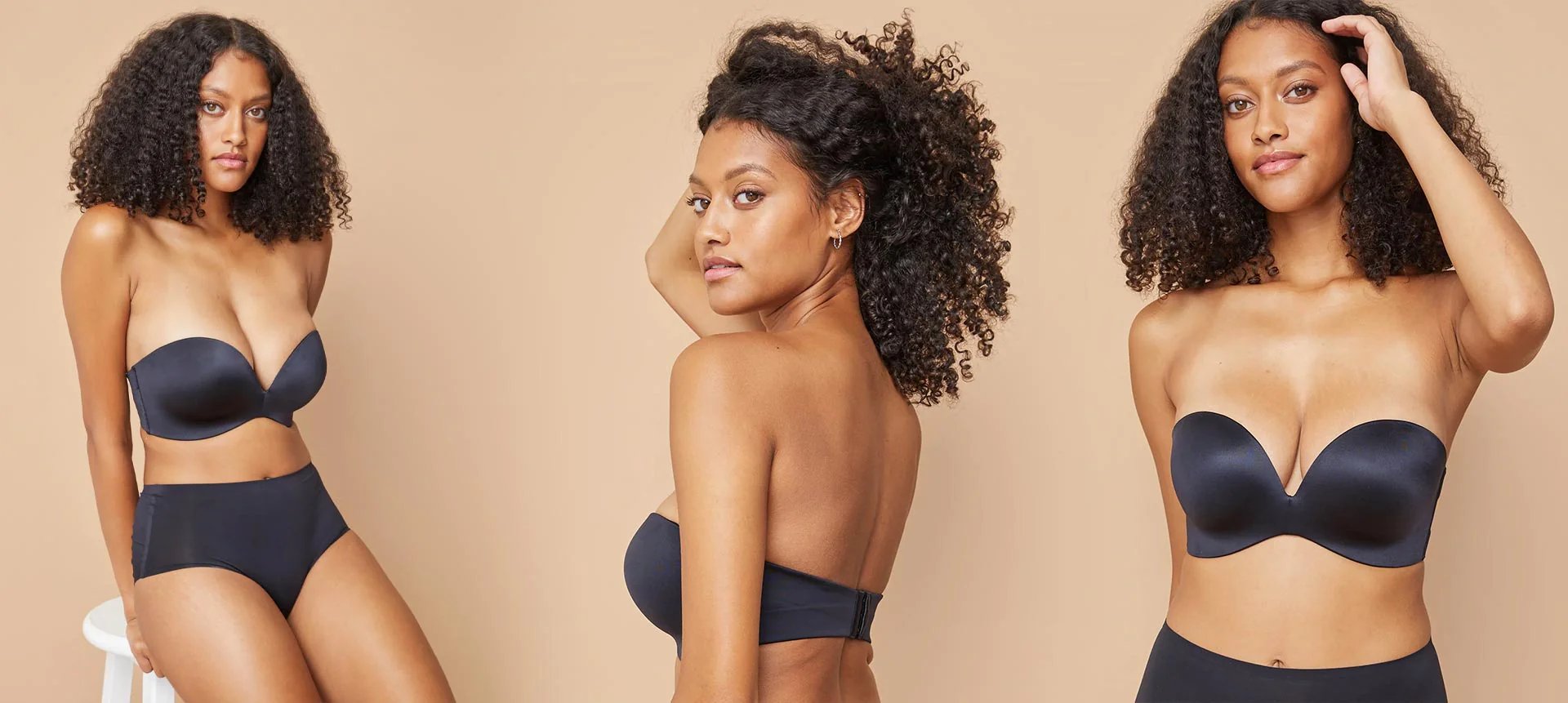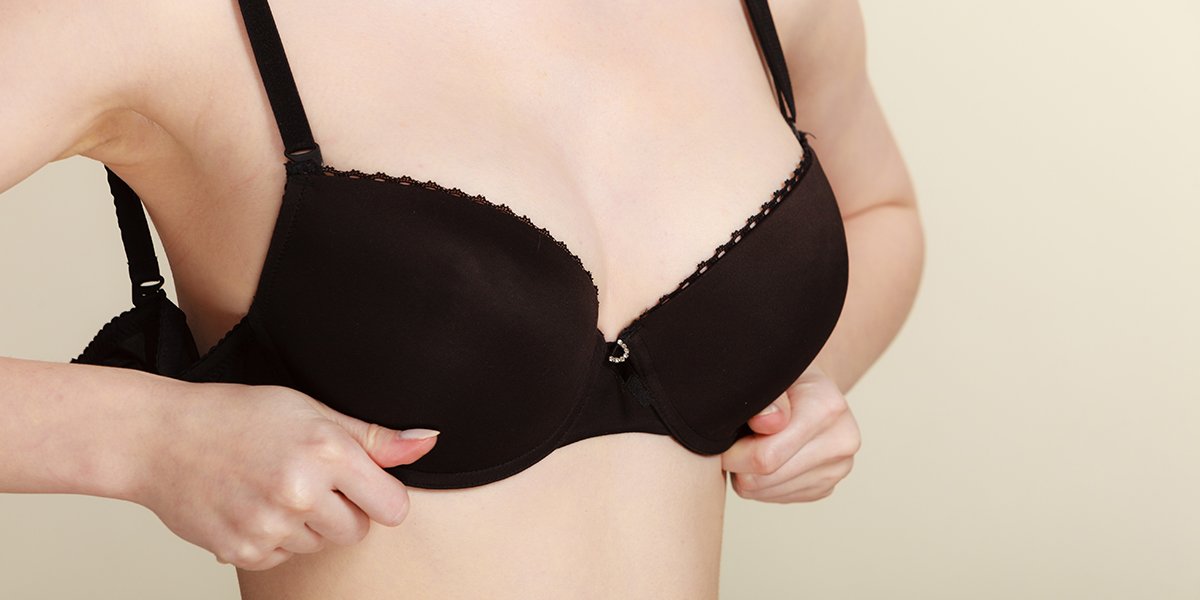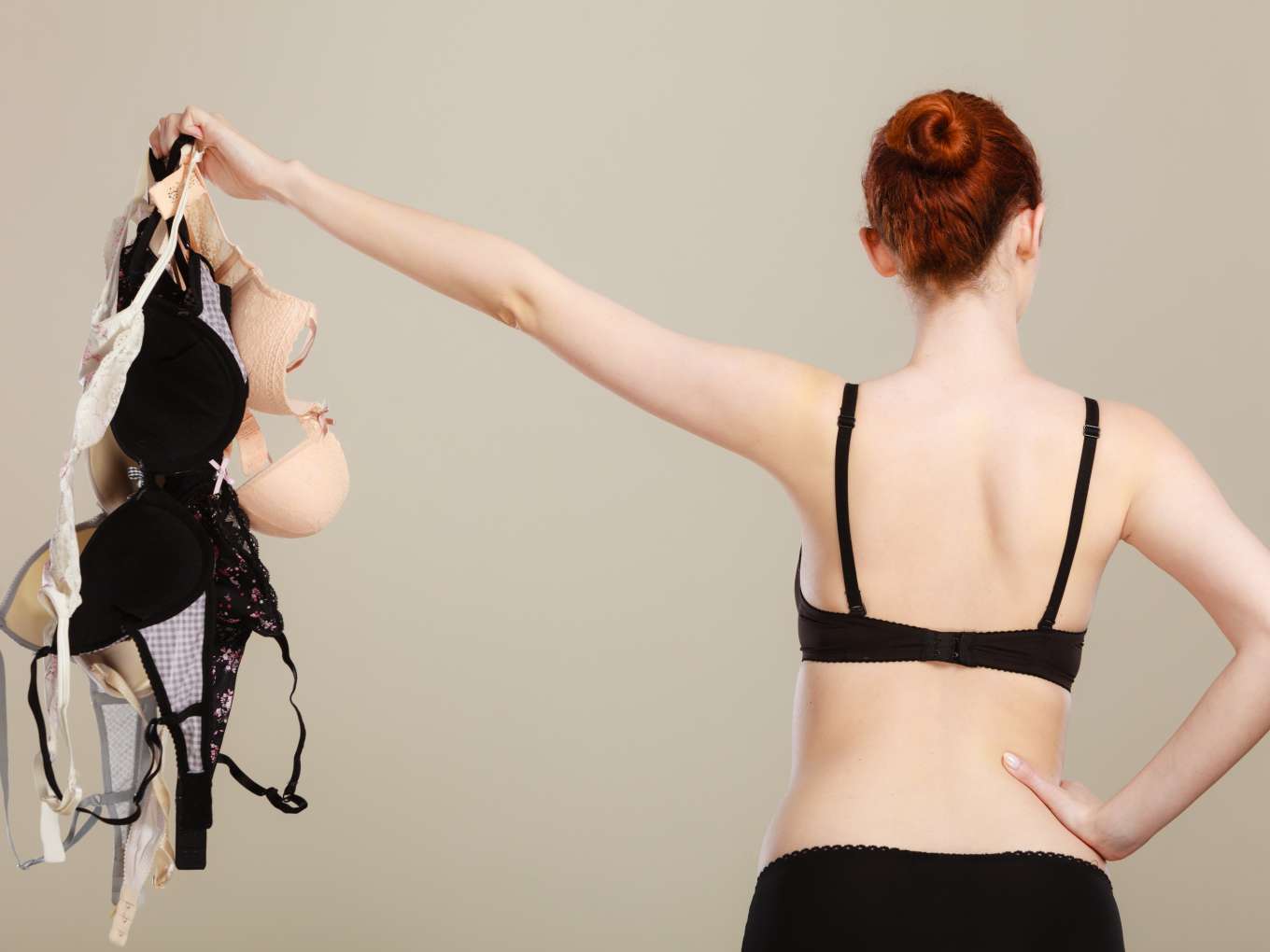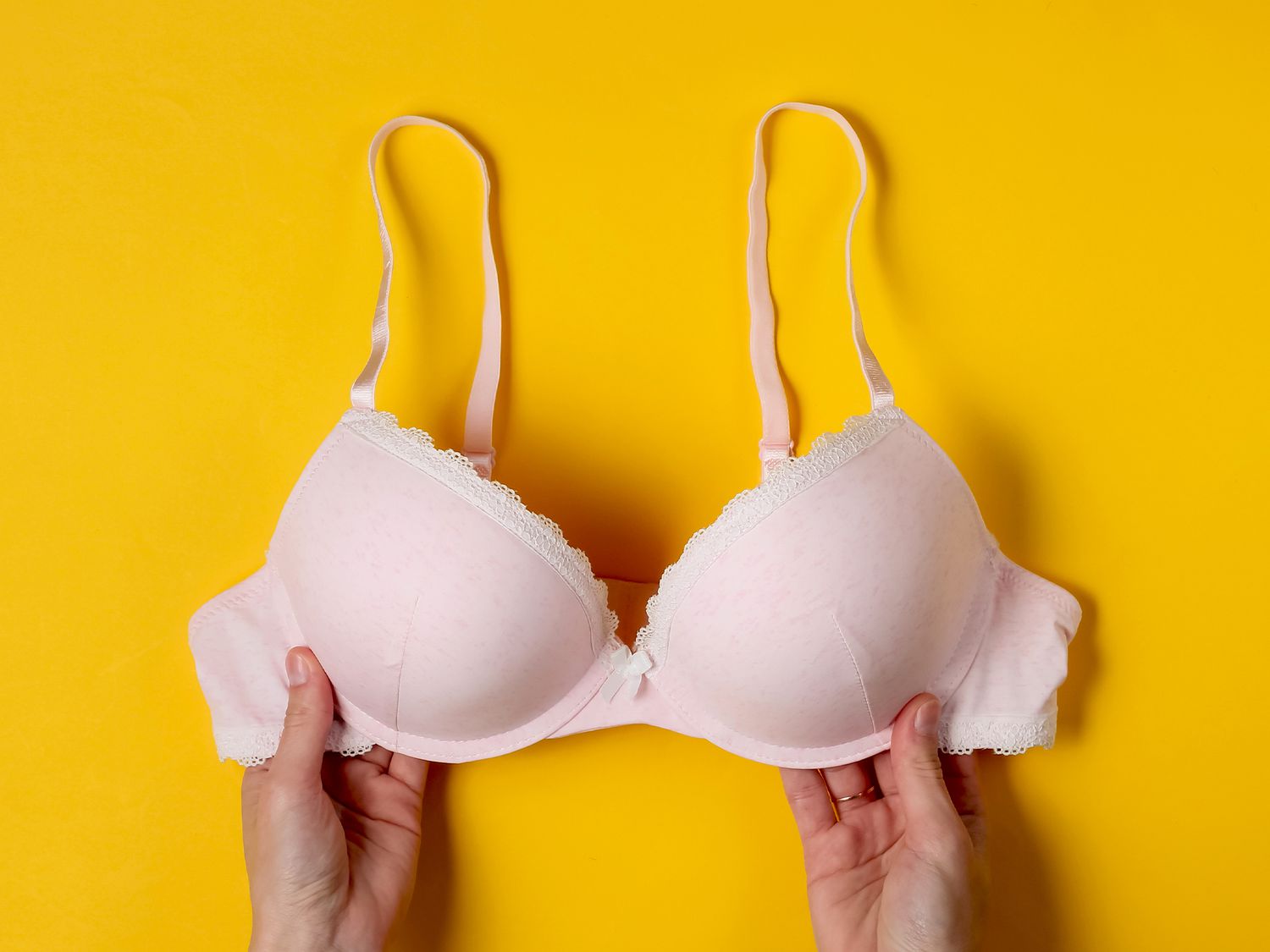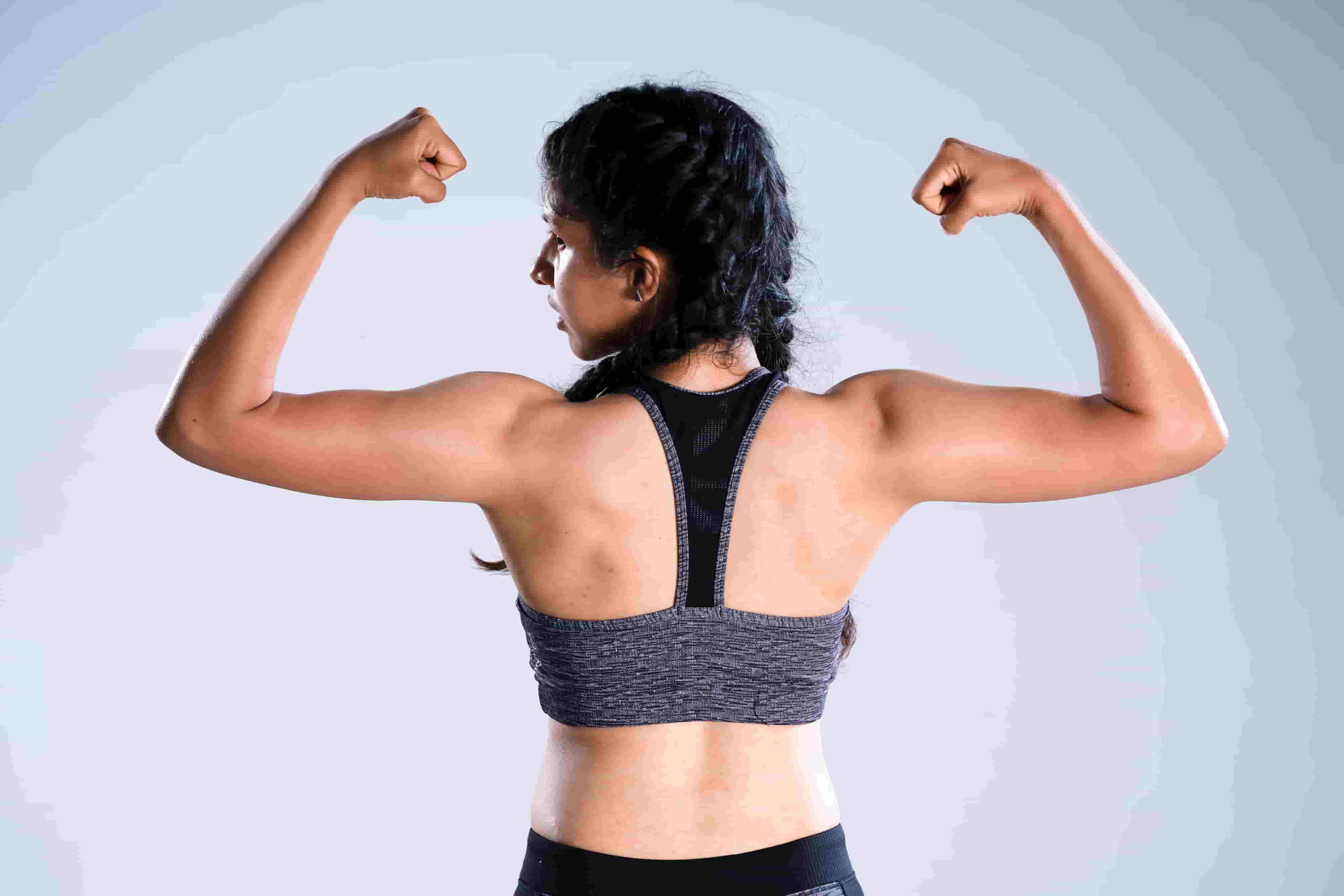Home>Buying Guides>How Should Swimsuit Fit
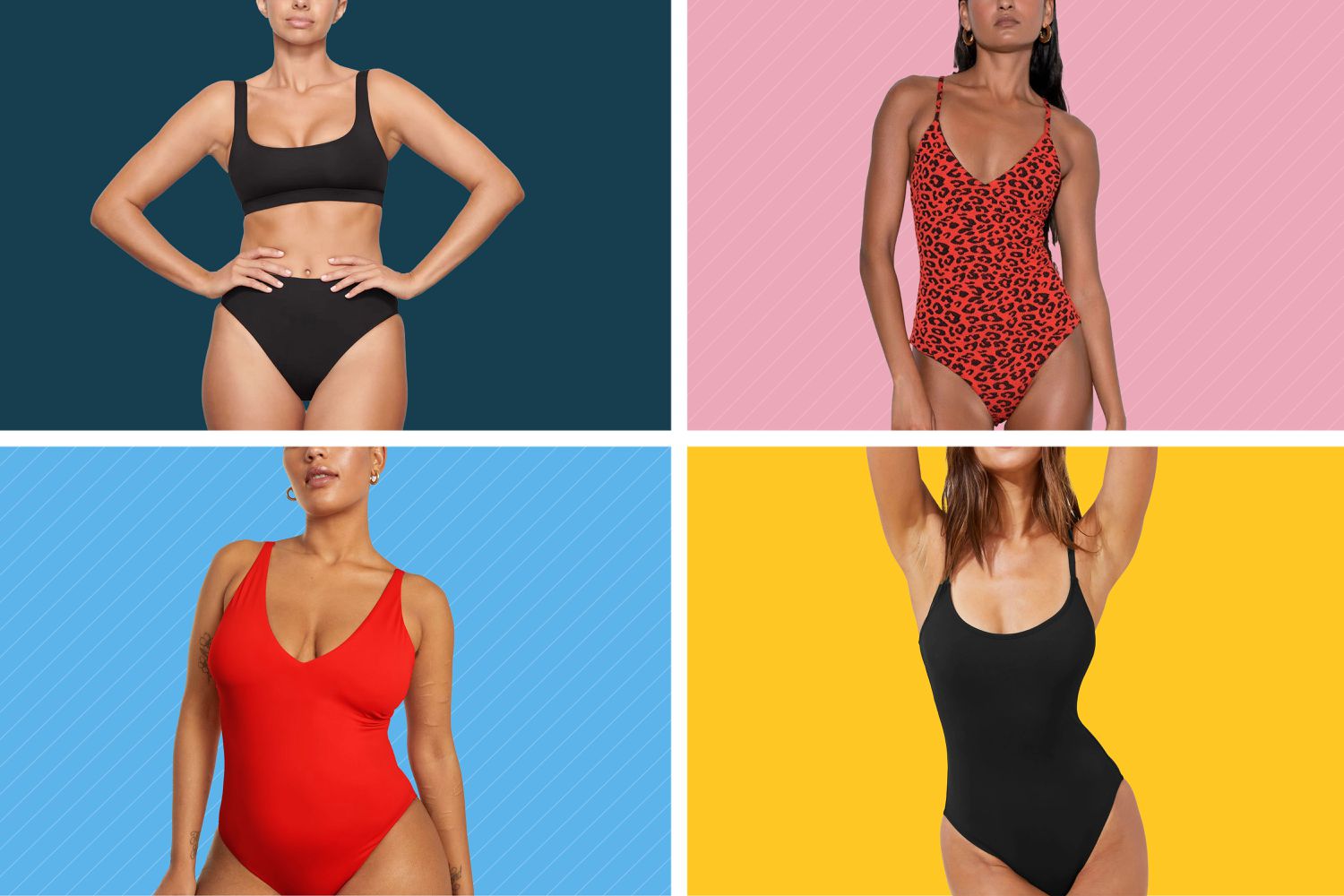

Buying Guides
How Should Swimsuit Fit
Modified: August 5, 2023
Find out how a swimsuit should fit for women. From choosing the right size to ensuring proper support, discover expert tips for a comfortable and flattering swimwear fit.
(Many of the links in this article redirect to a specific reviewed product. Your purchase of these products through affiliate links helps to generate commission for Under-tec.com, at no extra cost. Learn more)
Table of Contents
Introduction
Welcome to our comprehensive guide on how to find the perfect swimsuit fit. As summer approaches, many women are excited to hit the beach or pool and soak up the sun. However, the key to enjoying your time in the water and feeling confident lies in finding a swimsuit that fits you perfectly.
Every woman has a unique body shape, and it’s important to embrace and celebrate your individuality. Whether you have an hourglass figure, a pear-shaped body, or an athletic build, there is a swimsuit out there that will enhance your natural beauty and make you feel amazing.
In this guide, we will take you through the step-by-step process of finding the perfect swimsuit fit. From understanding your body shape to evaluating the fit of the bust, straps, band, and bottoms, we’ll cover everything you need to know to ensure that your swimsuit not only looks great but also feels comfortable and allows for ease of movement.
We’ll also discuss the importance of compression and support in a swimsuit, as well as practical tips for ensuring overall comfort and mobility. By the end of this guide, you’ll have the knowledge and confidence to shop for swimwear that suits you perfectly and allows you to enjoy your time in the water to the fullest.
So, whether you’re planning a tropical vacation, an afternoon at the local pool, or simply want to feel fabulous on a sunny day, read on to discover how to find the perfect swimsuit fit for you.
Understanding Your Body Shape
When it comes to finding the perfect swimsuit fit, understanding your body shape is crucial. Every woman’s body is unique, and certain styles and cuts will flatter different shapes in different ways. By identifying your body shape, you can choose swimsuits that accentuate your best features and minimize any areas you may be less confident about.
Here are some common body shapes and the swimsuit styles that often work well for each:
- Hourglass: If you have a well-defined waist with balanced hips and bust, consider swimsuits that highlight your curves, such as high-waisted bottoms and tops with molded cups or underwire for support.
- Pear Shape: If you have wider hips and thighs compared to your upper body, opt for swimsuits that draw attention to your upper body while providing coverage and support for your lower half. Look for a halter neck top or push-up style to enhance your bust, and choose bottoms with ruching or a skirted design to camouflage any areas you’re less confident about.
- Apple Shape: If you carry weight around your midsection, look for swimsuits that divert attention away from your stomach. Consider one-piece swimsuits with ruching or a tummy-control panel to create a slimming effect. V-necklines and empire waist styles can also help to elongate your torso.
- Athletic Shape: If you have a more athletic build with minimal curves, you can create the illusion of curves with the right swimsuit. Look for styles with ruffles, frills, or cut-outs to add femininity and create the appearance of curves. Opt for triangle tops or bandeau styles to enhance your bust.
Remember, these are just general guidelines, and everyone’s body is unique. Don’t be afraid to try on different styles and experiment to find what works best for you. The most important thing is to feel confident and comfortable in your swimsuit.
Now that you understand the importance of your body shape when it comes to finding the perfect swimsuit fit, let’s move on to the next step: choosing the right size.
Choosing the Right Size
When it comes to swimsuits, finding the right size is essential for both comfort and confidence. Wearing a swimsuit that is too tight or too loose can not only be uncomfortable but also affect how you feel and look in the swimwear. Here are some tips to help you choose the right size:
- Measurements: Start by taking accurate measurements of your bust, waist, and hips. Consult the size chart provided by the swimwear brand you’re interested in to determine the best size for you. Keep in mind that swimwear sizes can vary between brands, so it’s important to refer to their specific size guide.
- Style Considerations: Consider the style of swimsuit you want to purchase. Some styles, like one-pieces or tankinis, may require additional measurements such as torso length. Ensure that you’re choosing a size that accommodates these specific style requirements.
- Fit Preference: Think about how you prefer your swimsuit to fit. Do you like a snug fit for more support, or do you prefer a looser fit for added comfort? Keep this in mind when selecting your size.
- Trial and Error: If possible, try on different sizes to see which one fits you best. Remember that swimwear often stretches when wet, so consider whether you want a slightly tighter fit to account for this.
It’s important to note that swimsuits should fit differently based on the coverage and style. For example, a one-piece may feel tighter because of its construction, while a bikini may have a bit more flexibility in terms of fit. Pay attention to how the swimsuit feels on your body and make sure it provides ample support for your bust and stays in place when you move.
Remember, swimsuit sizes are just a number, and it’s more important to find a size that makes you feel comfortable and confident. Don’t hesitate to try different sizes and styles until you find the perfect fit for your body.
Now that we’ve covered choosing the right size, let’s move on to evaluating the fit of specific areas, starting with the bust.
Evaluating the Fit of the Bust
The fit of the bust is a crucial aspect to consider when finding the perfect swimsuit. Whether you have a smaller or larger bust, it’s important to ensure that your swimsuit provides the right amount of support and coverage. Here are some tips for evaluating the fit of the bust:
- Cup Size: If you have a larger bust, look for swimsuits with built-in cups, underwire, or adjustable straps for added support. These features can help lift and shape your bust, providing a flattering silhouette and minimizing any potential discomfort. On the other hand, if you have a smaller bust, you can opt for bandeau or triangle tops for a more natural and relaxed fit.
- Coverage: Consider the level of coverage you desire. Some women may prefer more coverage to feel secure and confident, while others may prefer a more revealing style. Choose a swimsuit top that provides the right amount of coverage for your comfort level.
- Stay Put: Make sure the bust area of your swimsuit stays in place when you move around or swim. It should not gap or shift, as this can lead to discomfort and potential wardrobe malfunctions. Adjust the straps or ties as necessary to achieve a secure and comfortable fit.
Remember that everyone’s body is unique, and what works for one person may not work for another. When evaluating the fit of the bust, trust your own judgment and ensure that you feel both comfortable and confident in your swimsuit.
Now that we’ve covered the bust, let’s move on to checking the fit of the straps and band.
Checking the Fit of the Straps and Band
The fit of the straps and band in a swimsuit is important for both comfort and support. Ill-fitting straps can dig into your shoulders, causing discomfort, while an improperly fitting band can lead to a lack of support and potential wardrobe malfunctions. Here are some tips for checking the fit of the straps and band:
- Adjustability: Look for swimsuits with adjustable straps. This allows you to customize the fit and ensure that the straps are not too tight or too loose. Adjust the straps so that they provide support without digging into your shoulders.
- Elasticity: The band at the bottom of your swimsuit should feel snug but not overly tight. It should stay in place and provide support for your bust. Ensure that the elastic in the band is not stretched out or loose, as this can affect the overall fit and support.
- Stability: Test the stability of the straps and band by moving around and, if possible, simulating swimming motions. Your swimsuit should stay securely in place without shifting or riding up. If you notice any issues, consider adjusting the straps or trying on a different size or style.
It’s important to note that different swimsuit styles may have different strap and band designs. For instance, a bikini top may have thin or thick straps, while a one-piece swimsuit may have a halter neck or cross-back straps. Consider the style you prefer and choose straps and a band that provide the desired level of support and comfort.
Overall, the fit of the straps and band should ensure that your swimsuit stays in place, provides adequate support, and allows for comfortable movement. Checking these aspects will help you find a swimsuit that fits you perfectly and allows you to enjoy your time in the water with confidence.
Now that we’ve covered evaluating the fit of the straps and band, let’s move on to assessing the fit of the bottoms.
Assessing the Fit of the Bottoms
When it comes to swimsuits, the fit of the bottoms is just as important as the top. The right fit ensures comfort, coverage, and confidence. Here are some tips for assessing the fit of the bottoms:
- Coverage Level: Consider the level of coverage you feel comfortable with. If you prefer more coverage, opt for high-waisted bottoms or boyshorts. If you prefer a more revealing style, choose bikini bottoms or hipster cuts. The key is to find a style that flatters your body shape and makes you feel confident.
- Snug but Not Tight: The bottoms should fit securely without feeling overly tight or digging into your skin. You should be able to move and sit comfortably without feeling restricted. If the bottoms feel too tight, try a larger size. If they’re too loose, consider a smaller size or a different style.
- Rise: Pay attention to the rise of the bottoms, which refers to the height from the crotch to the waistband. Different rises can create different looks and offer varying levels of coverage. Consider your personal preference and choose a rise that complements your body shape.
- Elasticity: Check the elasticity of the leg openings and waistband. They should have enough stretch to fit comfortably and stay in place without sagging or digging in. Ensure that the elastic is not worn out or stretched beyond its original shape.
Remember that the fit of the bottoms can greatly impact your overall comfort and confidence. Trying on different styles and sizes will help you find the perfect fit that makes you feel your best.
Now that we’ve covered assessing the fit of the bottoms, let’s move on to considering compression and support in a swimsuit.
Considering Compression and Support
Compression and support are important factors to consider when choosing a swimsuit. They can enhance your comfort, confidence, and overall silhouette. Here are some things to consider:
- Compression for Control: Swimsuits with compression features can provide a slimming effect by holding in and smoothing out certain areas of your body. Look for swimsuits with tummy control panels or strategic ruching to help create a more streamlined appearance.
- Built-in Support: Many swimsuits come with built-in support features, such as molded cups, underwire, or shelf bras. These features can lift, shape, and support your bust, providing a flattering and secure fit. If you have a larger bust, consider swimsuits with thicker straps or adjustable options for added support.
- Consider Your Activity Level: If you’re planning on engaging in more active water activities, such as swimming or beach volleyball, look for swimsuits that offer high levels of compression and support. These features will help keep everything in place and provide the necessary support for movement.
- Targeted Support: Depending on your body shape and personal preferences, you might want targeted support in specific areas. For example, if you carry more weight in your hips and thighs, consider swimsuits with a higher compression level in those areas to create a more balanced look.
Compression and support can vary depending on the style and fabric of the swimsuit, so it’s important to take those factors into consideration as well. Additionally, always prioritize your comfort when considering compression and support. You should feel supported and confident in your swimsuit without sacrificing comfort.
Now that we’ve discussed considering compression and support, let’s move on to ensuring comfort and mobility in your swimsuit.
Ensuring Comfort and Mobility
When it comes to swimwear, comfort and mobility are key. You want to be able to move freely and comfortably, whether you’re swimming laps, playing beach volleyball, or simply relaxing by the pool. Here are some tips to ensure both comfort and mobility in your swimsuit:
- Fabric Selection: Choose swimsuits made from high-quality, stretchy, and breathable fabrics. Look for materials such as nylon, polyester, or spandex blends, which offer both comfort and flexibility.
- Seam Placement: Examine the placement of seams in the swimsuit. Ideally, they should lie flat against your skin and not cause any irritation or digging. Well-placed seams can enhance both comfort and mobility.
- Elasticity and Stretch: Ensure that the swimsuit has enough elasticity and stretch to allow for easy movement. This is especially important for activities that require more flexibility, such as swimming or water sports.
- Adjustability: Look for swimsuits with adjustable features, such as tie closures or adjustable straps. These allow you to customize the fit and ensure maximum comfort for your body shape.
- Lining and Comfort Features: Some swimsuits come with additional features like soft lining, padding, or seamless construction for added comfort. Consider these features for a more enjoyable and comfortable wearing experience.
Remember that everyone’s idea of comfort may vary, so it’s crucial to prioritize your own preferences and needs. What feels comfortable for one person may not feel the same for another. Don’t be afraid to try on different styles and sizes to find the perfect balance of comfort and mobility for you.
Now that we’ve covered ensuring comfort and mobility in your swimsuit, let’s wrap up our guide with some final thoughts and tips.
Final Thoughts and Tips
Congratulations! You have now learned the essential steps for finding the perfect swimsuit fit. Here are some final thoughts and tips to keep in mind:
- Confidence is Key: Regardless of your body shape or size, the most important thing is to feel confident and comfortable in your swimsuit. Embrace your unique beauty and wear your swimsuit with pride.
- Try Different Styles: Don’t be afraid to try different swimsuit styles and cuts to find what works best for you. What may not work for someone else may be the perfect fit for you.
- Shop at Retailers with Size Inclusivity: Look for swimwear brands and retailers that offer a wide range of sizes and inclusive options. This ensures that you have more choices and opportunities to find the perfect fit.
- Take Care of Your Swimsuit: Rinse your swimsuit with cool water after each use and allow it to air dry to help maintain its shape and elasticity. Avoid machine washing and drying, as this can damage the fabric.
- Accessorize to Enhance Your Look: Don’t forget to accessorize your swimsuit to complete your beach or poolside look. Add a sun hat, sunglasses, or a cover-up for an extra touch of style.
Remember, finding the perfect swimsuit fit is a personal journey, and it may take some time and experimentation. Keep these tips in mind, trust your instincts, and most importantly, have fun while shopping for your new swimsuit!
Now go out there, enjoy the water, and make unforgettable memories in a swimsuit that fits you perfectly!
